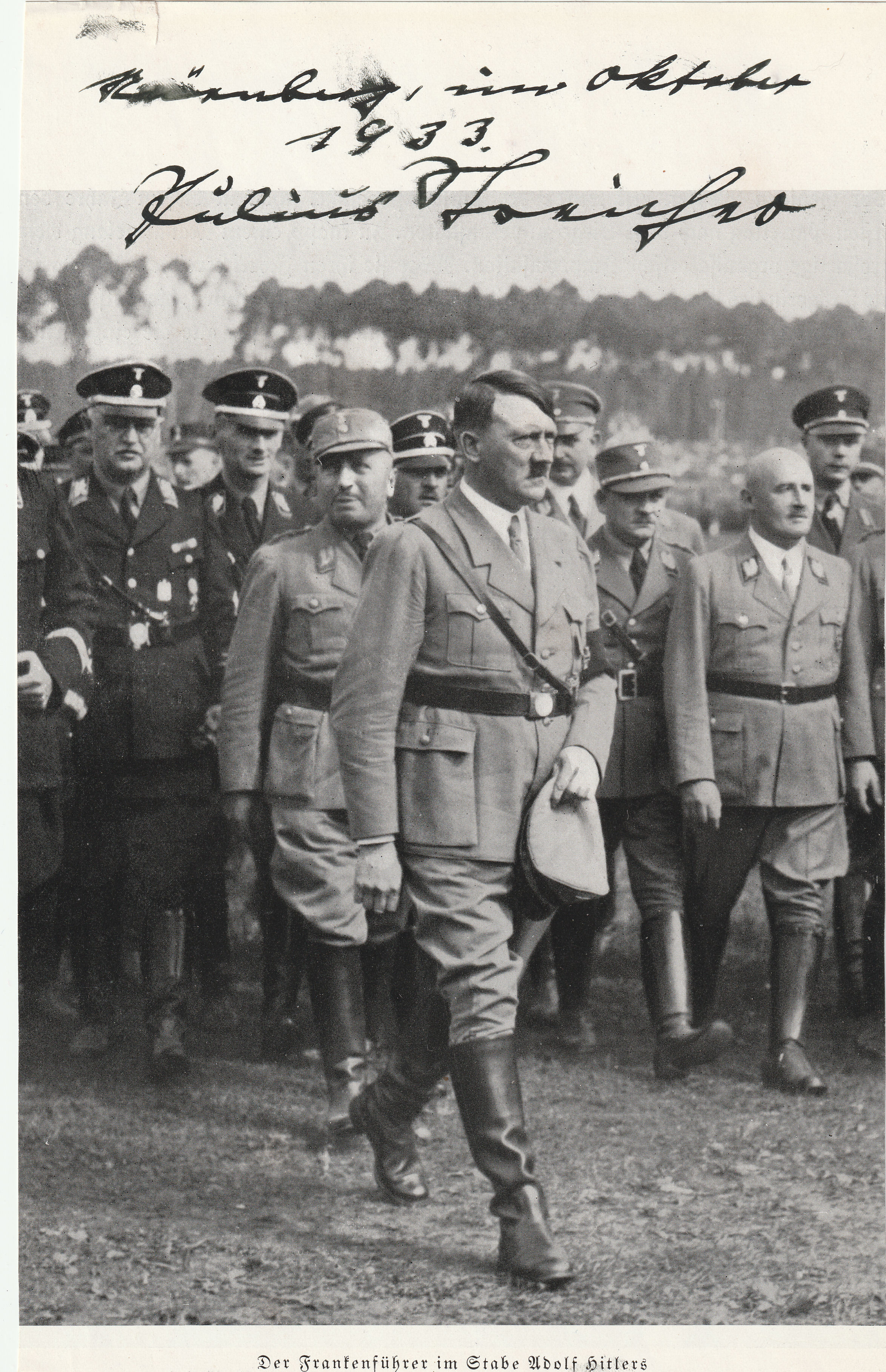


Hjalmar Schacht told one of the prison doctors, “You just have to look at that worm Streicher on the stand and see the kind of man Hitler protected to the very end! Ugh! That man Hitler had no conception of decency and honor and dignity. The guards despised him for calling out lewd remarks in the prison whenever a woman appeared, while his fellow Nazis recalled with disgust when, during his days in power, Streicher strutted about Nuremberg, whip in hand, lashing out at Jews and others and openly trying to seduce German women as well.įormer German finance minister and Reichsbank president Dr.
#Julius streicher trial#
The official psychiatric conclusion, however, was that, although he suffered from a neurotic obsession, he was not clinically insane and therefore was both mentally and legally competent to stand trial for his life. He also rated the lowest on the prison-administered intelligence quotient tests, and even his own defense counsel wondered whether his lewd sexual perversions and rabid anti-Semitic writings and speeches did not in fact spring from a diseased mind. Indeed, almost all of his fellow accused war criminals considered Streicher unfit to socialize with. Nor was she the only one at Nuremberg to turn her back on the man who allegedly washed his face in his sparse cell’s toilet bowl, the so-called “dirty old man” of the prison. In an attempt to avoid capture by the victorious Allies, Streicher allowed his hair and beard to grow long. When the prison physicians asked him to undress for the standard physical examination, a female Russian interpreter stepped to the door and looked away, leading a leering Streicher to ask, “What’s the matter? Are you afraid of seeing something nice?” Disgusted, the girl shivered in revulsion and remained turned away from him. In the Allied prison at Nuremberg after the war, Streicher also soon established himself as the third most controversial prisoner, after Göring and Rudolf Hess, for his jailhouse antics. Julius Streicher: “Dirty Old Man” of the Prison Enraged, Göring insisted that Streicher be fired, and Hitler banished him from his high posts for the rest of World War II. He had been the all-powerful boss of Nuremberg, site of the massive Nazi Party congresses of 1927-1939, until he angered Adolf Hitler’s number two man, Hermann Göring, in 1940 by suggesting that the latter’s daughter was a test tube baby and not fathered by the “Iron Man” at all. Streicher, a former schoolteacher and holder of the coveted Iron Cross for his service in the German Army in World War I, was also an honorary Nazi SA Storm Troop leader and former Gauleiter (regional leader) of Nuremberg and Franconia, as well as an elected member of the national Reichstag in Berlin. Ironically, the world’s most infamous Jew baiter had himself been found out by a Jew. Startled, the “painter” blurted out, “How did you recognize me?” and thus it came to pass that the 59-year-old man with the shaggy beard, uncombed hair, blue striped shirt, and ragged trousers was arrested for being the accused notorious Nazi war criminal that he actually was. The man insisted that he was an artist and understood nothing about either politics or the just defeated Nazis, leading Major Blitt to declare, “But you look like Julius Streicher,” whose warrant mug shot he had just seen. Speaking Yiddish, the Jewish-American major began a conversation with a bearded man whom he mistook for the farmer, addressing him as “papa.” A jeepload of American GIs of the 101st Airborne Division, commanded by Major Henry Blitt, pulled up in front of a Bavarian farmhouse near Berchtesgaden for a drink of milk. It was May 23, 1945, roughly a year before the execution of Julius Streicher, founder and publisher of the vilest anti-Semitic Nazi propaganda of the war.


 0 kommentar(er)
0 kommentar(er)
